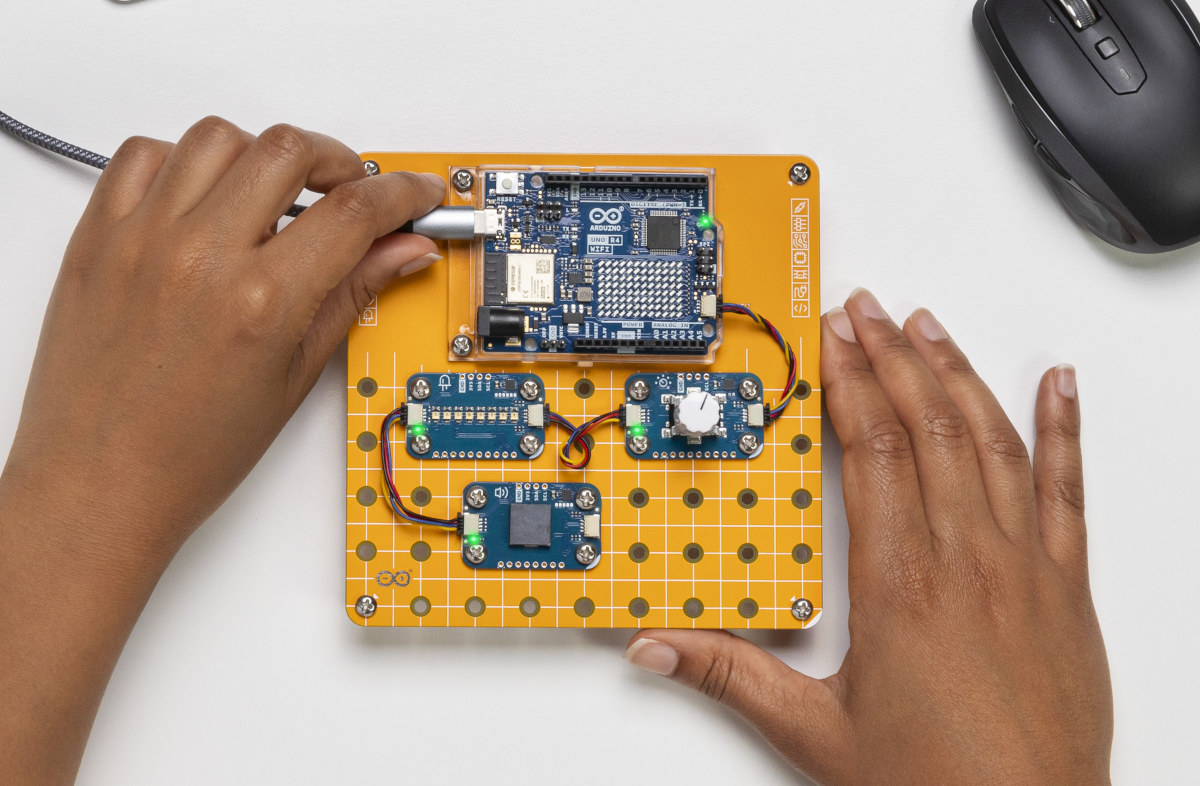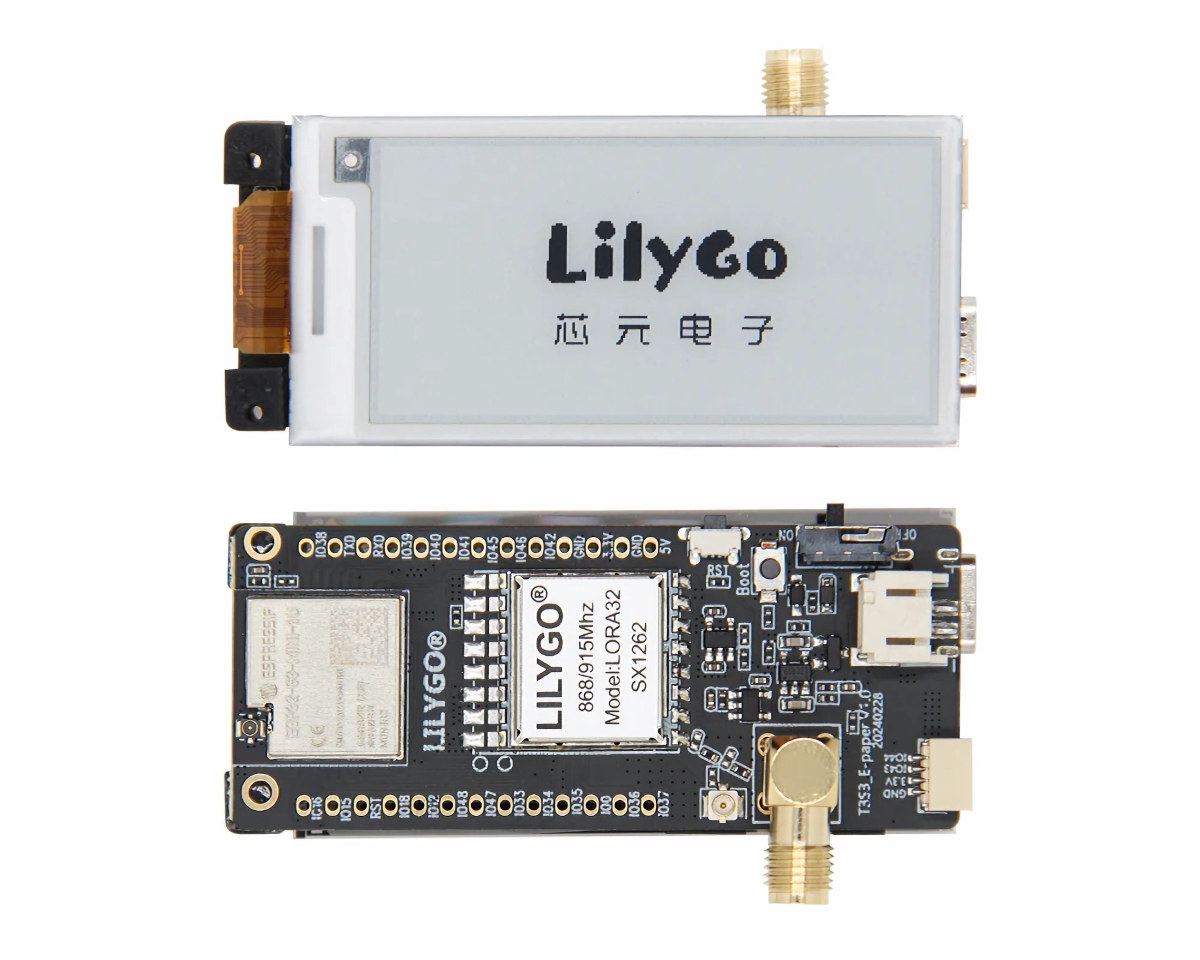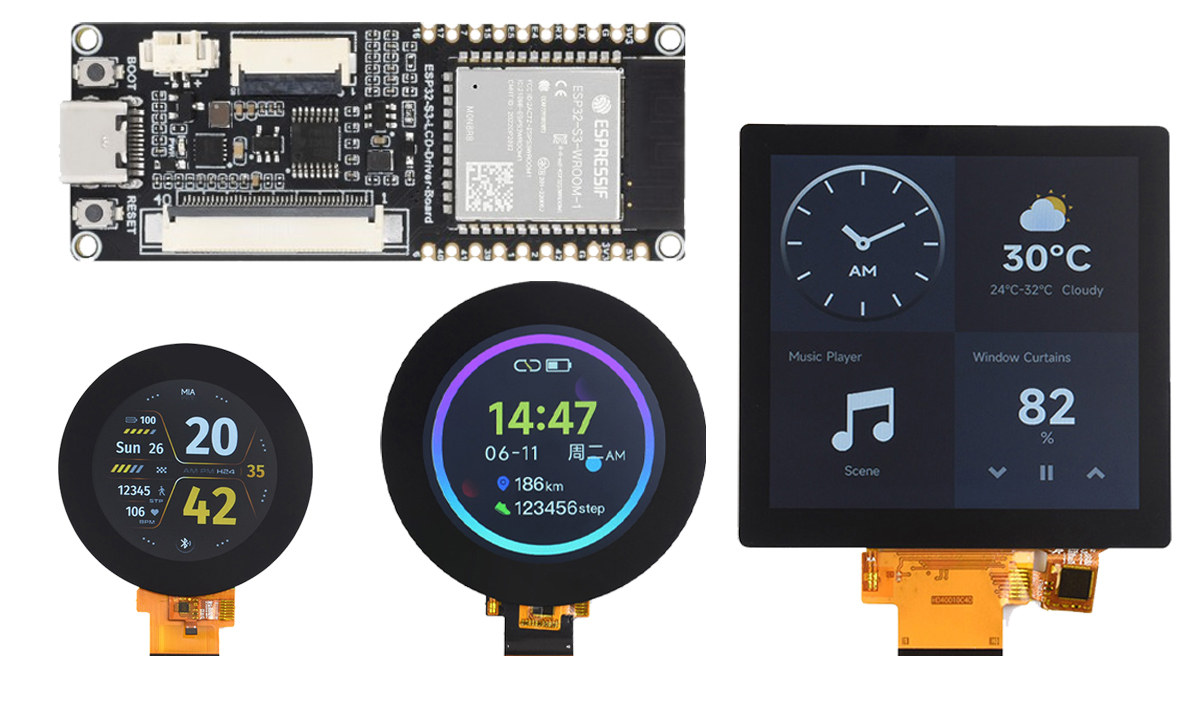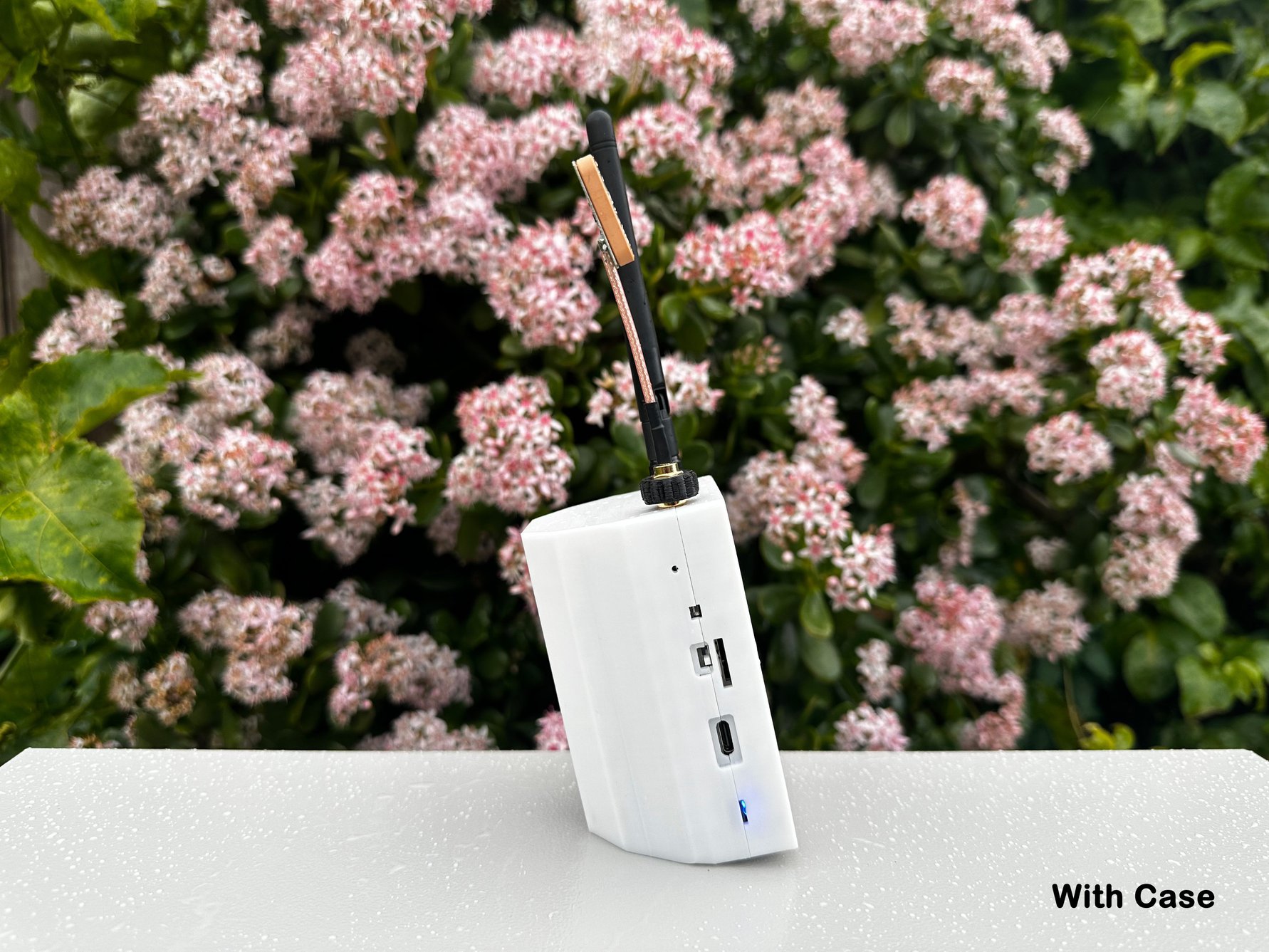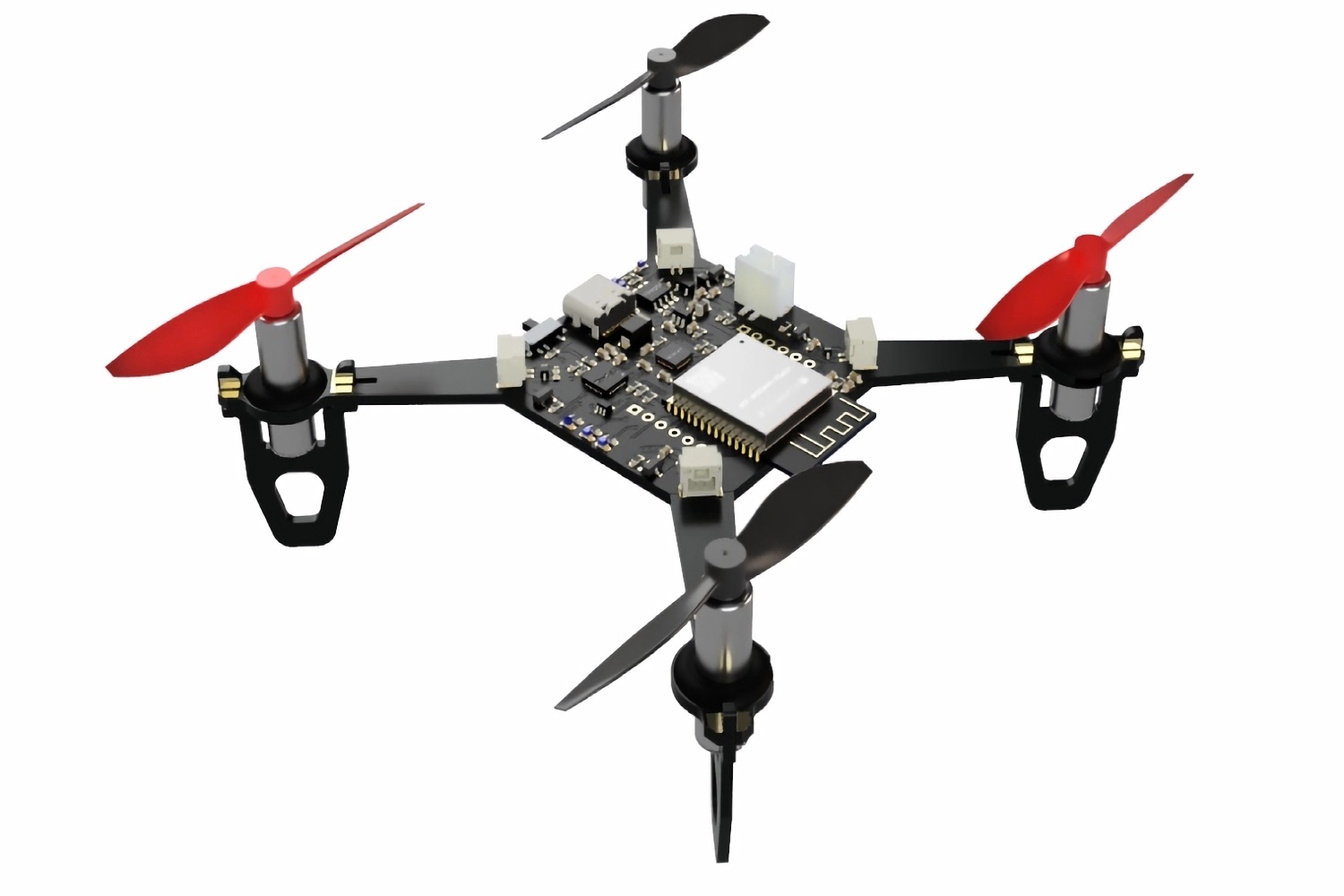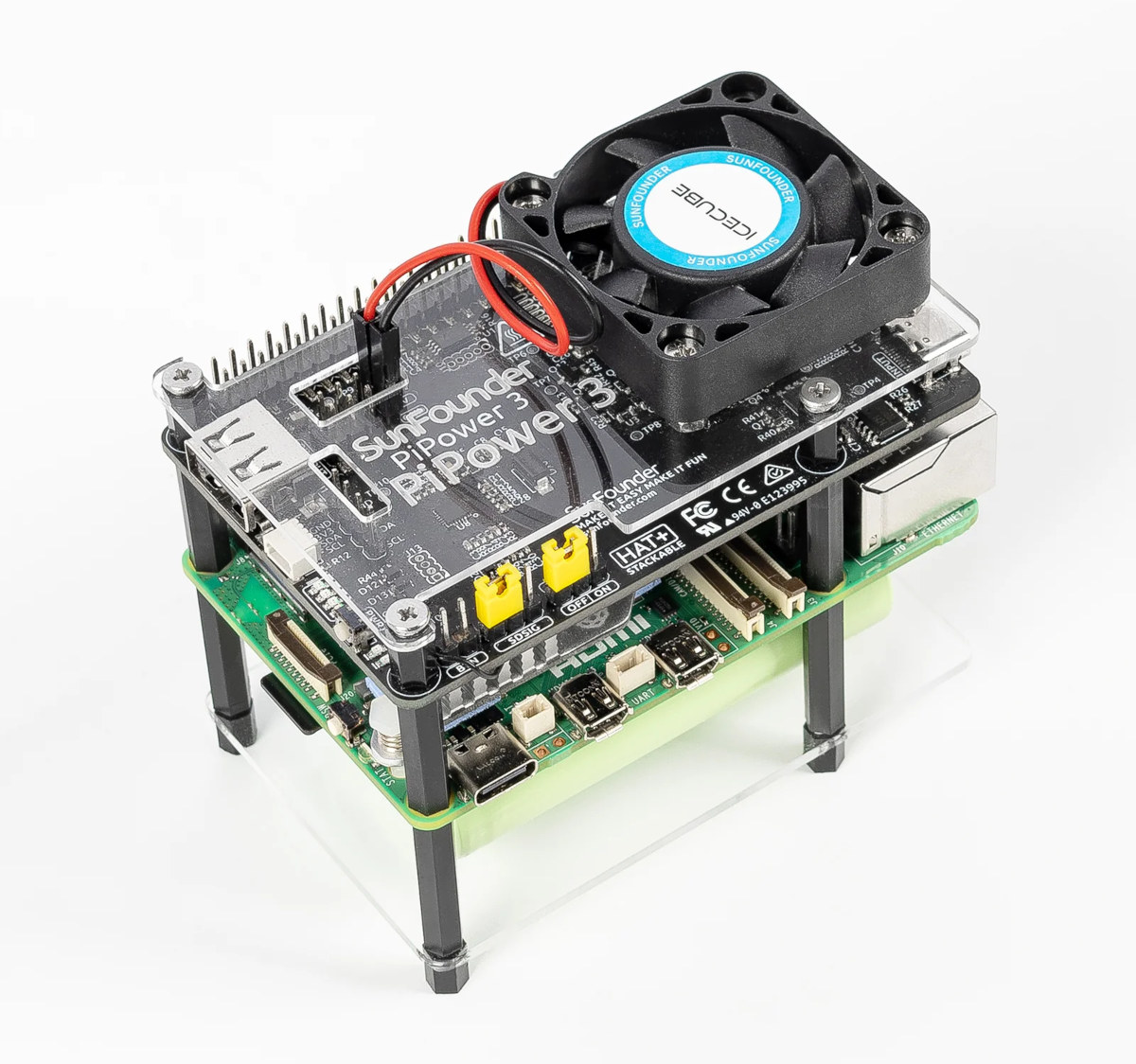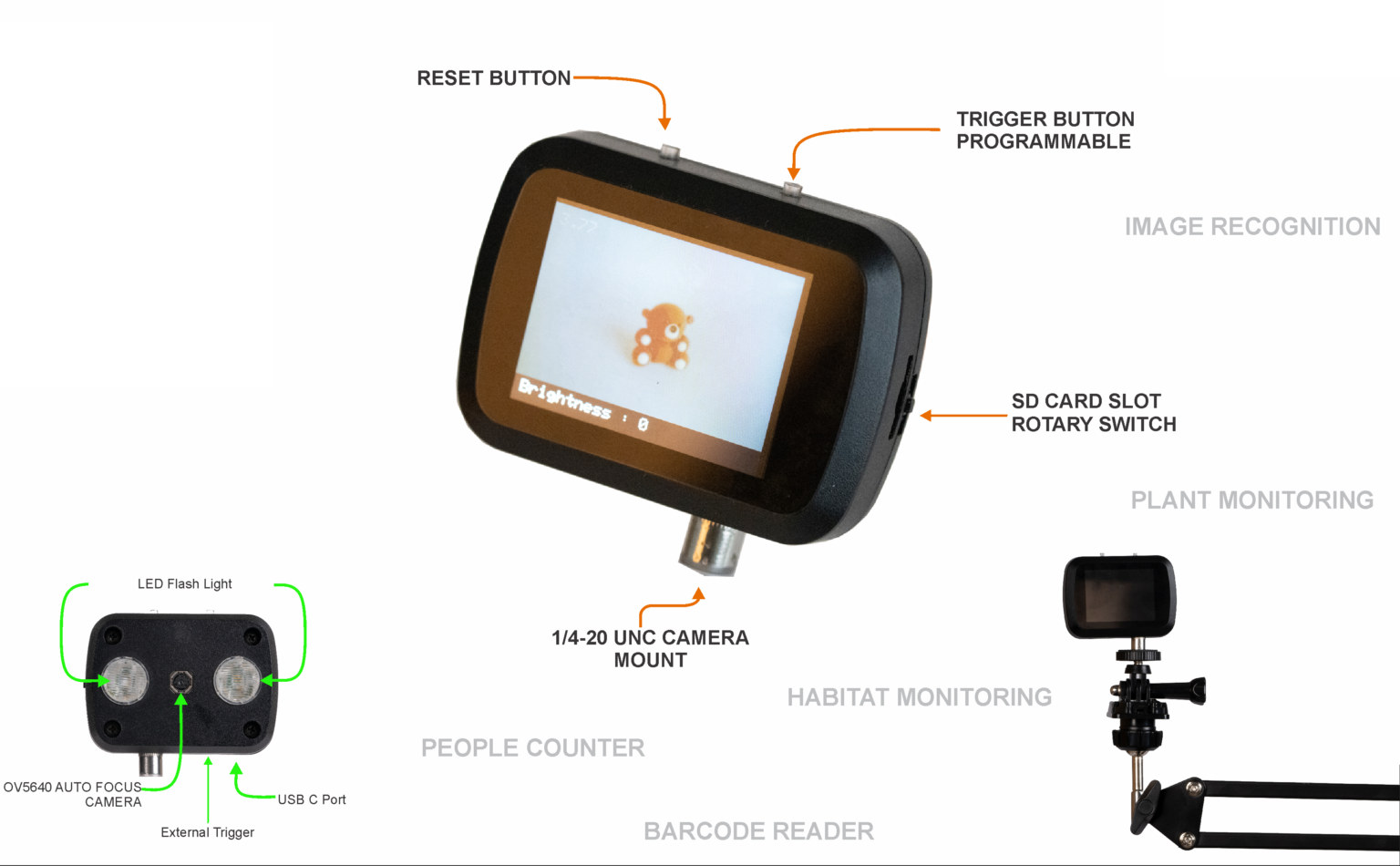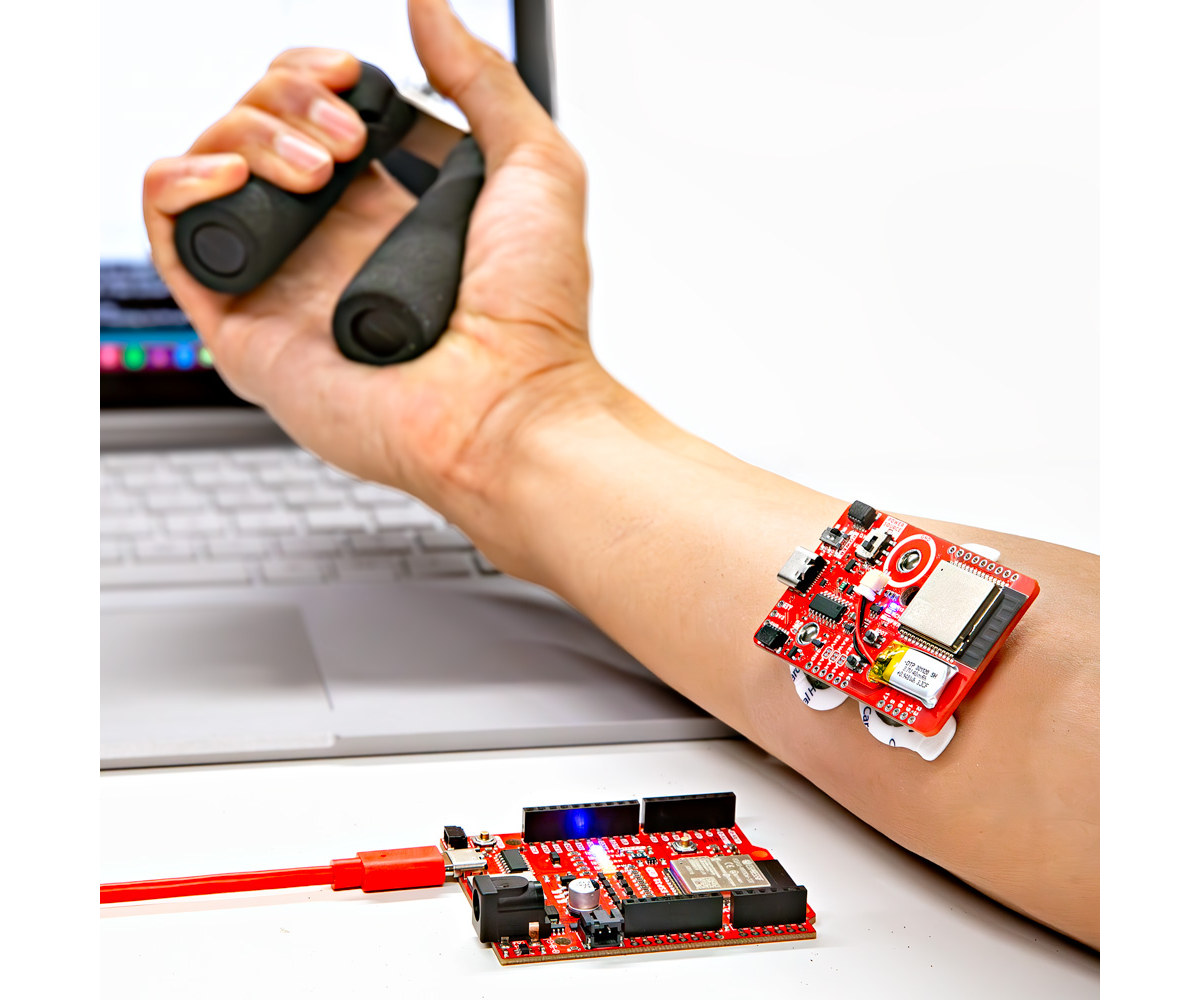Arduino has just launched a “Plug and Make” kit designed for beginners with an Arduino UNO R4 WiFi board, several “Modulino” modules, a “Modulino” base to neatly attach the UNO R4 and modules, and various cables, spacers, screws, and nuts. When thinking about Arduino projects, breadboards or even soldering may come to mind, but the new Arduino Plug and Make Kit does not require any of those. No breadboard, jumper wires, or soldering needed. Users can simply connect the modules to the Arduino board through Qwiic cables, neatly attach everything together on the provided base, and follow one of the seven projects complete with step-by-step instructions provided with the kit. The Arduino Plug and Make Kit content Arduino UNO R4 WiFi board 7x Modulino I2C nodes Modulino Knob* – Encoder for value adjustments Modulino Pixels* – 8x LC8822-2020 RGB LEDs Modulino Distance – STMicro VL53L4 Time-of-Flight (ToF) proximity sensor to […]
LILYGO T3S3 E-Paper combines ESP32-S3 WiFi & BLE SoC with LoRa module, 2.13-inch e-Paper display
LILYGO T3S3 E-Paper is an ESP32-S3 WiFi and Bluetooth LE development board with a 2.13-inch e-Paper display and an SX1262 LoRa module that should make it suitable for off-grid messsaging even under sunlight. LILYGO has made some ESP32-S3 boards with an e-Paper display and some ESP32-S3 boards with a LoRa module, but unless I’m mistaken, the T3S3 E-Paper is the first board from LILYGO that combines ESP32-S3 SoC with e-Paper display and a LoRa module. It builds upon the earlier LILYGO T3S3 board with a 0.96-inch OLED. LILYGO T3S3 E-Paper specifications: ESP32-S3-WROOM-1U wireless module SoC – ESP32-S3FH4R2 dual-core Tensilica LX7 microcontroller @ up to 240 MHz with 2.4 GHz 802.11n WiFi 4 and Bluetooth 5.0 LE connectivity Memory – 2MB PSRAM Storage – 4MB SPI flash IPEX antenna connector Storage – MicroSD card slot Display – 2.13-inch e-Paper display (DEPG0213BN) with 250×122 resolution; size: 48.55 x 23.70mm Wireless 2.4 GHz […]
ESP32-S3 LCD Driver Board supports both circular and square displays
Waveshare ESP32-S3 LCD Driver Board is a compact development board designed to simplify the GUI development process. The company mentions that the board supports 2.1-inch, 2.8-inch, and 4-inch displays and with an additional SPI and I2C header it can support a wide range of LCD panels. Additionally, the board features an onboard lithium battery charger and 15 usable GPIO pins for added flexibility. These features make this device suitable for applications like smart home devices, industrial control panels, and interactive kiosks. It seems like the board supports the 4-inch LF40 square touchscreen display that we wrote about just yesterday. other than that it also supports 2.1-inch and 2.8-inch circular displays. Seeking off circular displays, we have previously written about some ESP32-powered development boards with circular displays like the Waveshare 1.69-inch IPS touch LCD, the Waveshare RP2040-LCD-0.99-B, the Waveshare ESP32-S3-LCD-1.28 and many other types of displays. Feel free to check those […]
The ESP32 Marauder Pocket Unit v2 is a wireless penetration device with an onboard GPS module and touchscreen
The ESP32 Marauder Pocket Unit with GPS v2 is a portable Wi-Fi and Bluetooth penetration tool powered by an ESP32 module and used to test and analyze wireless networks. It features a 2.8-inch touchscreen, two 18650 batteries, an SD card slot, an LED battery indicator, and two external antennas for 2.4GHz Wi-Fi and GPS. ESP32 Marauder Pocket Unit v2 specifications: Microcontroller – ESP32 Wi-Fi & Bluetooth SoC Storage – MicroSD card slot for file sharing, backup, and firmware updates (8GB SanDisk memory card included) Display – 2.8-inch capacitive touchscreen USB – USB-C port for charging GNSS – Embedded GPS module Antenna – External dual antenna SMA connectors for WIFI and GPS Misc 1x battery status indicator Reset and Power buttons Power – 2x 18650 batteries Dimensions – 92 x 71 x 46mm The ESP32 Marauder device is based on JustCallMeKoko’s ESP32Marauder Project, a suite of Wi-Fi/Bluetooth offensive and defensive tools […]
SkyByte Mini Wi-Fi-controlled drone runs the open-source ESP32-Drone firmware (Crowdfunding)
The SkyByte Mini is a simple, miniature drone powered by the ESP32-WROOM-32 WiFi and Bluetooth module, and comprised of an MPU6050 inertial measurement unit, coreless motors, and plastic propellers. The Espressif ESP32-WROOM-32 module on the board provides a wireless connection that can be used to control the drone from a mobile app. The printed circuit board uses an “all-in-one” design that removes the need for 3D-printed parts and makes for a more compact final product. The drone’s functionality can be extended with external sensors to suit desired applications. It can be used for hobbyist and educational purposes. SkyByte Mini drone specifications: Wireless Module – ESP32-WROOM-32 module, dual-core Tensilica processor, with integrated Wi-Fi + Bluetooth 4.2 LE Motor control – 4x SI2302 N-Channel 20V MOSFET USB – USB-C port for power and programming Sensor – TDK Invensense MPU6050 IMU 3-axis gyroscope and 3-axis accelerometer Misc- 3x debugging LEDs, 1x power LED, […]
SunFounder PiPower 3 kit is a UPS solution for the Raspberry Pi 5 SBC
SunFounder PiPower 3 kit is a UPS solution designed to work with the Raspberry Pi 5, other Arm SBCs, or even MCU boards like Arduino UNO and Raspberry Pi Pico. The board delivers a stable 5V/5A output, and a 32-bit CH32V003 RISC-V microcontroller takes care of power management and battery level reporting to make sure the Raspberry Pi 5 keeps running when a power failure occurs and shutdowns gracefully when the battery level is low. The kit comes with two 18650 2,000mAh batteries that connect through a 2-pin connector, and all accessories – standoffs, acrylic case, and fan – for assembly with the Raspberry Pi 5, or other compatible boards like the Pi 4, Banana Pi BPI-M5, Radxa Rock Pi E, Orange Pi 3B, and others. PiPower 3 kit specifications: 32-bit CH32V003 RISC-V microcontroller supporting I2C communication Input – 5V/5A via USB Type-C with PD support Output – 5V/5A […]
NORVI AI Optic is an ESP32-S3 autofocus camera with dual LED flashlight, 2.1-inch LCD display
NORVI Controllers’ AI Optic – also written as AIOptic – is an ESP32-S3 camera solution with a 5MP OV5640 autofocus camera module, a 2.1-inch LCD Display, a dual LED flashlight, and a microSD card for data storage. The camera also features a USB-C port for power and programming and a built-in 600mAh backup battery. It comes with a rotary switch for menu navigation and power on/off and supports external triggers via a dry contact input. NORVI AI Optic specifications: Wireless module – ESP32-S3-WROOM-1U-N16R8 MCU – ESP32-S3 dual-core Tensilica LX7 up to 240 MHz with vector extension (for ML/AI), 512KB SRAM Memory – 8MB PSRAM Storage – 16MB flash Wireless – WiFi 4 and Bluetooth LE 5 Storage – MicroSD card slot Display – Optional 2.1-inch LCD display with 320×240 resolution using ST7789 driver Camera – 5MP OV5640 autofocus camera USB – 1x USB Type-C port for power and programming Misc Dual […]
MyoWare 2.0 Muscle Sensor Wireless Kit targets electromyography (EMG) applications
The MyoWare 2.0 Muscle Sensor Wireless Kit is an Arduino-compatible electromyography (EMG) sensor kit capable of detecting and measuring the electrical signals generated by muscle fibers in the body. The MyoWare 2.0 kit is a collaborative product by SparkFun and Advancer Technologies. The MyoWare 2.0 ecosystem brings several improvements over the previous generation, including a compact design, solderless snap connectors, and an upgraded chipset for improved reliability and performance. It includes shields designed to seamlessly interface with the MyoWare 2.0 Muscle sensor, a wearable, Arduino-compatible EMG sensor. The Muscle Sensor’s wearable design makes it possible to directly attach biomedical sensor pads and add-on shields to the board. It operates on a single-supply voltage between +3.3V to +5V and supports three separate output modes. It analyzes filtered and rectified activity from muscle movement and outputs a signal from 0 to the power source voltage (VIN) that represents the intensity of flex. […]


